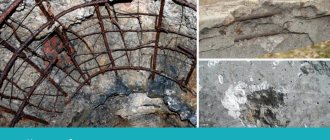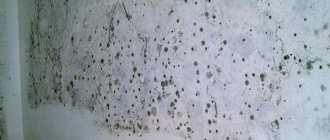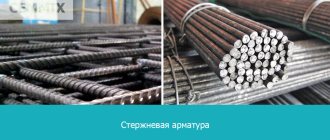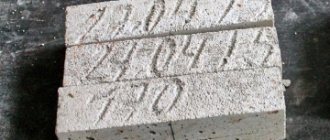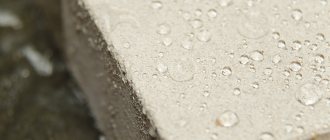The accumulation of sediments, chemical elements, salts and acids in the soil have a destructive effect on the concrete structure. Special protection of concrete from corrosion and other negative factors extends the service life of the entire structure. Protective measures are needed both outside and inside the premises. Impregnation of the material with water-repellent substances makes the surface more resistant to atmospheric agents. An additional coating of waterproofing agents makes the concrete stronger and more durable.
Epoxy resin based paints and varnishes
Epoxy resins are used to make a huge number of materials for various applications. They are used in the radio electronics, electrical engineering, shipbuilding, aircraft and mechanical engineering industries, including as film-forming paints and varnishes, as components of impregnating and casting compounds, sealants, adhesives, etc. A wide selection of film formers allows you to create products with a wide variety of properties (for example, EP-741 varnish, HP-0064 putty). These compounds are used for anti-corrosion protection of products made of wood, concrete, plastics, metal structures and others. About 50% of the total world production of epoxy resins is used for these purposes. More details
Protection materials
From inside the room
Special waterproofing agents will help protect the room from mold and the building from destruction.
Concrete is widely used in the construction of residential, commercial or industrial premises. When the material comes into contact with a humid environment, water penetrates the pores, and when exposed to frost, the liquid freezes, increasing in size, and destroys the structure from the inside. Protective insulation for a home's foundation prevents mold from growing on the walls. Protecting a material from corrosion is to prevent moisture from entering the product. For this purpose the following means are used:
- coating mastics;
- impregnating mixtures;
- rolled products.
Concrete structures that come into contact with wooden products require special waterproofing. In this case, wood materials need more protection, since moisture accumulating in concrete is absorbed into the wood and activates rotting processes. To do this, additional insulation is carried out at the points of contact of these two building materials. Moisture protection is needed for windows, doors, rafters, and wooden sleepers.
Isolation on the street
Volumetric methods
Protection of concrete from destruction on the street is selected depending on the degree of exposure to destructive factors on the structure. As a rule, waterproofing on the outside of a house lasts 1-3 years, since atmospheric conditions and temperature changes negatively affect the insulating layer. The protective layer is created by a combination of several methods. The first stage of insulation is volumetric protection; for this, the following building materials are used:
To make the concrete solution more plastic and streamline, plasticizers are used.
- Plasticizers. They serve to impart plasticity to the concrete solution, which contributes to better shrinkage of the mixture and streamlining of the formwork. Such measures help prevent aggressive substances from penetrating into the artificial stone.
- Water repellents. They help compact the solution and prevent the formation of a large number of pores, which are subsequently saturated with water.
- Hardening accelerators. The product also serves as a sealant for the solution and increases the water resistance of the finished structure.
- Elasticizers. Additives for the elasticity of the solution protect against the harmful effects of low temperatures, wind and water.
- Additives for sulfate resistance. Used together with special sulfate-resistant cement or separately from it.
Since the outdoor environment is more aggressive than indoors, insulating building materials are used comprehensively to extend the service life of the structure.
Superficial
It is impossible to avoid the formation of pores in a concrete product, therefore methods of impregnating the concrete surface with special mixtures or facing mastics are used. You can protect concrete from moisture, the influence of sulfuric and other acids, oil and petroleum products in the following ways:
The cement ironing method will help to make a reliable cladding and extend the service life of the surface.
- Carrying out ironing with cement. This method provides a reliable lining for concrete that will last as long as the entire structure. It is used to protect concrete floors in garages, parking lots and warehouses.
- Hydrophobizing mixtures. The surface is impregnated with the prepared solution. Chemical protection involves penetration of the product several centimeters deep into the product, creating a film coating. Penetrating waterproofing "Penetron" can make concrete completely impenetrable.
- Polymer paint. Creates a protective layer in the form of a film. The disadvantage of such cladding is its fragility. After 3-5 years, the object is repainted. “DECOR VARNISH” is widely used, which protects building materials from water.
- Liquid rubber. Penetrates deep into concrete up to 50 cm and creates a durable waterproofing layer. The advantage is the elasticity of the top layer, which is able to withstand cracking of concrete and remain intact.
- Roll products. They are glued to concrete areas of the building and prevent water from penetrating into the pores of the building material, protecting the walls from the formation of dampness.
- Anchor sheet for concrete protection. Attached to the surface directly during construction or repair. Products are cut out and fastened by welding.
In highly aggressive conditions
The method of protecting the structure depends on the operating conditions. Special compounds are used against aggressive environments. When influenced by these factors, it is recommended to use the following building materials:
You can protect a structure from aggressive environmental influences by using liquid glass.
- compositions based on vinyl esters;
- furan polymers;
- liquid glass;
- special repair and restoration cement systems.
To protect the structure in conditions of increased radioactive radiation, special heavy concrete is used. Building materials weaken the effects of radiation. The parameters of the required product are set by a radiation protection specialist. If specialists deviate from the norms, the structure will fail faster. The strength of concrete floors in industrial enterprises is ensured by the Mastertop strengthening mixture.
Concrete protection is regulated by GOST 31384–2008.
View "GOST 31384–2008" or
All about modern decorative plasters
Modern decorative plasters are an excellent choice of paints and varnishes for renovation and construction of a house or apartment. Their use makes it possible to improve the appearance of structures, hide and eliminate visible defects, improve the indoor microclimate, and facilitate subsequent work. The main thing for today is to understand all the diversity presented in order to get the ideal final result. More details
The role of enamels in protection against corrosion of metal and concrete
Almost all elements used for construction purposes require additional protection with paint and varnish products. Basically, protection against corrosion of metal is required - sheet metal with a factory coating using the coil-coating method and protection of reinforcement in reinforced concrete. Recently, corrosion protection of concrete surfaces has become increasingly important; EP-140 and EP-255 enamels are used for these purposes. More details
What a builder should know: causes of destruction
The protection of metal from corrosion is regulated by SNiP 2.03.11-85, which specifies the necessary methods by which the anti-corrosion ability of artificial stone is increased.
View “SNiP 2.03.11-85” or
Contact of moisture with metal reinforcement leads to corrosion of concrete, which destroys the material from the inside.
Concrete is a popular building material that has high strength, which allows it to be used for both indoor and outdoor use. To prevent the structure from collapsing under the influence of atmospheric phenomena and chemical elements, primary and secondary protection of concrete is carried out. These measures are necessary to prevent the destructive influence of such factors:
- Concrete corrosion. When steel wire comes into contact with moisture, a chemical reaction occurs, causing the metal to increase in volume and destroy the building material from the inside. Protecting reinforcement from damage consists of preventing its contact with permanent sources of moisture.
- Salts and acids. Together with precipitation and from the soil, these substances fall onto the concrete structure and, penetrating into the pores, destroy the material.
- Chemicals. Outdoors or indoors, these elements can accidentally fall on the concrete surface and have an aggressive effect on the concrete.
- Industrial gas. This substance often gets onto concrete structures in industrial conditions, so the facilities in such factories are isolated.
- Exposure to low temperatures. Moisture that penetrates the pores during frost freezes and expands. This destroys the concrete from the inside.
Waterproofing foundations and roofs
Proper waterproofing of the foundation and roof is extremely necessary as one of the stages of building a house or bathhouse. Already during the laying of the building, work should be carefully carried out on the foundation. Creating an insufficient or poor-quality water-repellent layer on it can subsequently lead to serious damage to the entire structure as a whole. More details
Why protect concrete?
The aggressive environment for concrete includes precipitation, water, ultraviolet rays, chemical reagents and mechanical load. The first two factors are especially destructive if the composition contains sulfate compounds. From the chemical reaction of the alkaline binder with them, salts are formed that are easily washed out. This is how cracks form and pores increase.
Chemical reagents of an aggressive nature include:
- organic solvents;
- salt solutions;
- acidic gases;
- water with a pH index above 7 (containing alkali).
Moisture changes in volume as temperatures change. When it gets into the porous structure of a concrete floor, it destroys the monolith. This suggests that concrete needs comprehensive protection. It should be aimed at improving several characteristics at once.
Fire protection for your wooden house and bathhouse
Wooden houses, baths, saunas are places with high humidity and fire danger. Their surfaces require additional treatment with protective compounds: fire retardants, antiseptics and special varnishes/primers. Competent fire and bioprotection of a wooden house and bathhouse allows... Read more
What is better to use for a wooden house: tow, moss or sealant?
What is better to use for a wooden house or bathhouse: tow, moss or sealant?
This question faces everyone who builds their own wooden house. It doesn’t matter what is used to create a log house - logs or beams, there will still be gaps between them. These are the ones you should get rid of first. For these purposes, in our country it has traditionally been customary to use natural materials moss and tow. But today a new product has appeared - sealant. It is also used for insulating seams between logs and for sealing chips and cracks on wooden surfaces. More details ↑ Up
The SpetsEmal company sells paint and varnish materials for any purpose: electrical insulation, anti-corrosion, marine, fire protection and many others. Please note that we also sell fire retardant materials for plastic, concrete, textiles, metal, wood. A wide range of coatings on any basis: KO, AK, AS, GF, HS, VL, HP, EP, FL guarantees satisfaction of your needs! Special prices apply: primer xs-04, enamel ko-868, enamel ak-511, enamel ep-525, primer bep-0147.
Ways to combat reinforcement corrosion
In modern construction, water-repellent lubricants and protective coatings for fittings are used. One way to protect metal elements is to provide a concrete pad of the required size using clamps.
One of the main difficulties in combating corrosion of reinforcement is the impossibility of re-processing the metal, which can be carried out for exposed metal structures.
The most promising direction is the use of polymer mixtures in concrete. Polymers introduced into concrete in combination with cement create additional protection for the reinforcement. In some cases, cement is completely replaced with polymers, producing polymer concrete.
For thin-walled structures it is possible to use fundamentally new materials:
- steel fiber reinforced concrete is a concrete mixture into which scraps of steel wire are added, occupying up to 6% of the total volume of the material;
- In addition to traditional components, alkali-resistant glass fiber is added to glass fiber reinforced concrete.
Until universal and effective ways to combat metal corrosion in reinforced concrete have been found, builders are forced to lay in more reinforcement than required in accordance with technical calculations.
What materials can reliably protect an iron roof from corrosion?
Experts recommend using the composition XT-8000, which is characterized by high wear resistance, ease of application (with an ordinary brush or roller), resistance to aggressive environments (acid rain, rust), resistance to ultraviolet radiation, and is also an excellent means of fire protection.
What is special about applying protective coatings using HVLP technology?
HVLP technology is a cloudless spray of paint achieved by adjusting air pressure at various stages of paint flow.
By varying the balance between high and low pressure, very precise spraying can be achieved (by reducing the speed of the paint particles being sprayed). In addition, this design makes it possible to change the size of the torch from 10 to 300 mm, which allows you to form a uniform layer with great accuracy.
The most prominent representatives of the new family of spray guns are the GTI and GFP models.
Thanks to the new air cap, Trans-Tech technology was obtained, which helped achieve:
- high quality spraying;
- obtaining the desired color, in exact accordance with the tone of the selected paint material;
- saving material;
- very low air consumption (only 280 l/min) at an inlet pressure of 2 bar;
- torch size settings for any materials.
Why is it necessary to paint building structures made of stainless metals?
In construction, metal structures made of galvanized steel, stainless steel, aluminum and even copper and other non-ferrous metals that are not subject to corrosion are increasingly being used. A logical question arises: Do such structures need to be painted? The answer will be unequivocal: “It’s absolutely necessary.” This serves a dual purpose.
Firstly, galvanized steel, aluminum and copper, although on a much smaller scale than regular steel, are still susceptible to corrosion. Therefore, they must be additionally protected with an anti-corrosion coating. Secondly, unpainted metal does not always fit into the architectural or design concept of the object. Consequently, metal surfaces require decorative painting to give the finished structure a finished look.
There are subtleties in painting galvanized surfaces and surfaces made of non-ferrous metals. What are they? First of all, you need to remember the specifics of preparing the surface before painting. Such metals cannot be subjected to conventional shot blasting, as this destroys their natural corrosion resistance. Surfaces of this kind are treated with a special abrasive agent - round glass particles that do not destroy the protective layer of zinc on the surface. Sometimes it is enough to simply treat with an ammonia solution to remove greasy stains and zinc corrosion products from the surface.
What primer can be applied directly to rust?
Primer VD-KCH-0184 (rust modifier), saturated with corrosion inhibitors, is ideal. Provides an excellent base for the application of anti-corrosion paints. Significantly extends the life of paint. Apply directly to rust. It works on the metal surface as a rust converter, binding it chemically, and the resulting polymer film reliably isolates the metal surface from the effects of an aggressive environment. An excellent primer-enamel AS-0332 (analogous to “Hammerite”) is also produced.
When is primer-enamel XB-0278 used?
XB-0278 is an anti-corrosion primer enamel for non-ferrous metals with excellent weather resistance characteristics. Intended for painting both clean and rusty or partially corroded metal surfaces. It has excellent frost resistance, abrasion and impact resistance. The product combines the properties of a rust converter, anti-corrosion primer and decorative enamel, which significantly simplifies the painting process. Can be applied directly to rust and air dries extremely quickly.
What are the approximate terms of anti-corrosion protection of certain paints and varnishes?
Widely used paint systems (consisting of 2-5 layers of paint) have anti-corrosion protection periods of 4-10 years.
Hot galvanizing of steel structures ensures a service life of 10-50 years.
How to remove rust from window latches and wrought iron fence hinges?
The easiest way to remove rust is with a diluted aqueous solution of hydrochloric or sulfuric acid containing the acid corrosion inhibitor Urotropin. This substance inhibits a chemical reaction (in this case, the reaction of dissolving a metal in an acid), but does not interfere with the interaction of the acid with iron oxide and hydroxide, which make up rust. If window bolts, lawn mower parts, bolts and nuts of water pumps, etc. are rusty, they are immersed in a 5% acid solution with the addition of 0.5 g of Hexamine per liter; the solution is applied to large items with a brush.
Using solutions of strong acids without an inhibitor is risky: you can dissolve not only rust, but also the product itself, since iron is an active metal and interacts with strong acids, releasing hydrogen and forming salts. For example, potato tops can be used as an acid corrosion inhibitor when removing rust. To do this, place fresh or dried potato leaves in a glass jar and fill it with 5-7% sulfuric or hydrochloric acid so that the acid level is higher than the crushed tops. After mixing the contents of the jar for 15-20 minutes, the acid can be drained and used to treat rusty iron products.
What is a "rust converter"?
This is a 15-30% aqueous solution of orthophosphoric (ordinary phosphoric) acid. It turns rust on the metal surface into a durable brown coating. It is applied as follows. A “rust converter” is applied to the corroded product with a brush or spray and allowed to air dry.
It is even better to use phosphoric acid with additives, for example, 4 ml of butyl alcohol or 15 g of tartaric acid per 1 liter of phosphoric acid solution. Orthophosphoric acid converts rust components into iron orthophosphate FePO4, which creates a protective film on the surface. At the same time, tartaric acid binds some of the iron derivatives into tartrate complexes.
How to protect tools from rust?
To do this, carpentry or plumbing tools are lubricated with a brush with a solution of 10 g of wax in 20 ml of gasoline. The wax is dissolved in gasoline in a water bath without using open fire.
The polished instrument is protected by applying a solution of 5 g of paraffin in 15 ml of kerosene to its surface.
There is also an old recipe for an ointment to protect metal from rust: Melt 100 g of pork fat, add 1.5 g of camphor, remove the foam from the melt and mix with graphite, ground into powder, so that the composition turns black. Lubricate the instrument with the cooled ointment and leave it for a day, after which the metal is polished with a woolen cloth.
What can I do to prevent the nuts from rusting to the bolts?
In order not to suffer in the future by unscrewing fasteners with rusted threads, they are lubricated in advance with a mixture of Vaseline and graphite powder. Instead of Vaseline, you can take any other fatty lubricant of a neutral or slightly alkaline type. Bolts and nuts with such a lubricant can be easily removed even after several years of exposure to the open sky.
How to apply a protective coating if the metal surface is wet?
One of the most serious problems that consumers face when applying paint and varnish coatings is the moisture remaining in the pores of the metal from the remains of old paint. When using traditional paint and varnish coatings, the film formed on top preserves and retains this moisture. The problem is successfully solved by one-component polyurethanes. Unlike traditional paints and varnishes, polyurethanes harden due to reaction with atmospheric moisture. As a result, a monolithic integral film is formed, firmly bonded to the surface and penetrating into the pores of the metal. In addition, due to the interaction of the components with moisture contained in the air, internal stress does not arise in the pores of the metal, as a result of which the coating does not swell during subsequent freezing.
How to protect the surface of an iron roof from moisture?
Organosilicate compositions have increased adhesion to metal and form a protective coating on the surface of metal structures painted with it, which has anti-icing, water-repellent, anti-corrosion and heat-freeze properties. The technology for applying the compositions does not differ from the methods of applying conventional paints and varnishes and is convenient in that, unlike most paints and varnishes, it can work at temperatures down to -20°C.
What is WD-40 and how was it created?
The WD-40 product is unique. It all started with the prank of millionaire Howard Hughes. In 1952, he ordered several jet passenger aircraft, and when the order was completed, Hughes suddenly abandoned them. While the two companies were arguing with each other, the planes standing on the airfield's runway began to become covered with rust.
General Dynamics was alarmed: something urgently needed to be done to prevent the devices from falling apart. The company's specialists turned to, which specialized in lubricants for aircraft. The company's president and chief chemist, Norman Larsen, began developing a composition of a substance that could eliminate rust. After the fortieth attempt, he composed a lubricant, which he called Water Displacement, and assigned it number 40 (based on the number of attempts).
Now the familiar aerosol bottle with the blue and yellow label “WD-40” can be found in 80% of American homes. However, not only American ones - the product is distributed in more than 120 countries around the world.
Where can you use WD-40?
Its main task is to remove water from the mechanical surfaces of components, parts or assemblies and protect them from rust and corrosion.
The principle of operation of WD-40 is simple, but extremely effective: it penetrates those parts of metal structures that are covered with rust, lubricates them and eliminates blockages in rusted or frozen mechanisms.
“WD-40” is an ideal travel companion for drivers; door hinges treated with it stop squeaking. The drug easily copes with rust that has formed inside the door lock of gates, garages, and in the “joints” of lawn mowers and pumps. Electrical contacts will be protected from rust for a long time if you cover them with a thin layer of WD-40, which, by the way, is not itself a conductor of electricity. If water has entered the generator motor, a short circuit has occurred, or loss of electrical conductivity due to moisture has occurred, direct a stream of WD-40 to the distributor, plug connectors, contacts, and the engine will start in a few minutes.
What is "zinganization"?
This is the name for the method of galvanizing using a one-component (ready-to-use) zinc composition Zinga (produced by the Belgian company ZingaMetall). All Zinga layers, no matter how long they are applied, merge into one single zinc layer. This allows, firstly, to set the service life of the coating from 10 to 50 years (1-6 microns of zinc “burns out” per year under different atmospheric conditions). Secondly, it is always possible to carry out local, “spot” repairs of both new and long-term “zinc-coated” or galvanized surfaces in any other way.
How to work with Zinga coating?
Apply by conventional spray, brush or roller. You can work with it in a wide range of temperatures and at high humidity, both in the workshop and on the work site. The optimal surface preparation is sandblasting. Old (rusty, previously painted or galvanized) surfaces can be cleaned with a high pressure water jet.
How does Zinga interact with other paints?
Most paints and varnishes adhere to this coating without any surface preparation. Polyurethane, epoxy, vinyl, oil-based, synthetic (except alkyd), water-soluble paints can be applied over Zinga. It can be coated with other compatible paints after 2 – 8 hours depending on drying conditions.
Are there coatings that can be welded over?
Without any risk associated with the quality characteristics of the weld, it is possible to weld steel coated with the Zinga anti-corrosion compound. The fact is that such a coating provides cathodic protection of welds. After welding, after cleaning the weld seams, Zinga can be easily applied to obtain an active uniform protective coating, no matter how the welded structures are galvanized.
Why do biological damage to structures occur?
The range of biodamaging agents is quite wide, ranging from bacteria, fungi, lichens, mosses and ending with fish, birds and mammals.
Objects of biodamage in construction are wood, brick, concrete, metal, metal products, polymer-based materials, etc.
How do biodamages form?
Research has established that the physical, chemical and biological factors of corrosion of mortars and concrete are closely interrelated. Since concrete is a capillary-porous body, this allows microorganisms to easily settle on the surface and then spread deeper, causing corrosion processes with the products of their vital activity. The main processes of destruction are caused by the action of acids released during the life of microorganisms.
Why are metals afraid of microbes?
An important place in construction practice is occupied by rust protection of reinforced concrete reinforcement. Research by scientists has established that bacteria have a detrimental effect on the steel reinforcement of reinforced concrete products. The “participation” of microorganisms in metal corrosion lies in its bacterial depolarization.
What is concrete corrosion?
Concrete corrosion is the deterioration of the characteristics and properties of concrete as a result of washing out or leaching from it:
- soluble components (corrosion of the first type);
- formation of corrosion products that do not have astringent properties (corrosion of the second type);
- accumulation of poorly soluble crystallizing salts, increasing the volume of its solid phase (corrosion of the third type).
